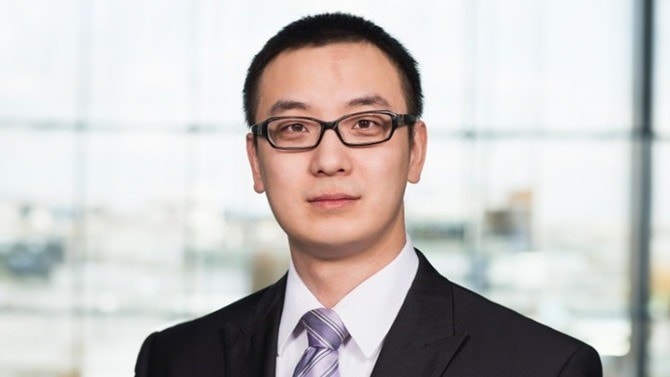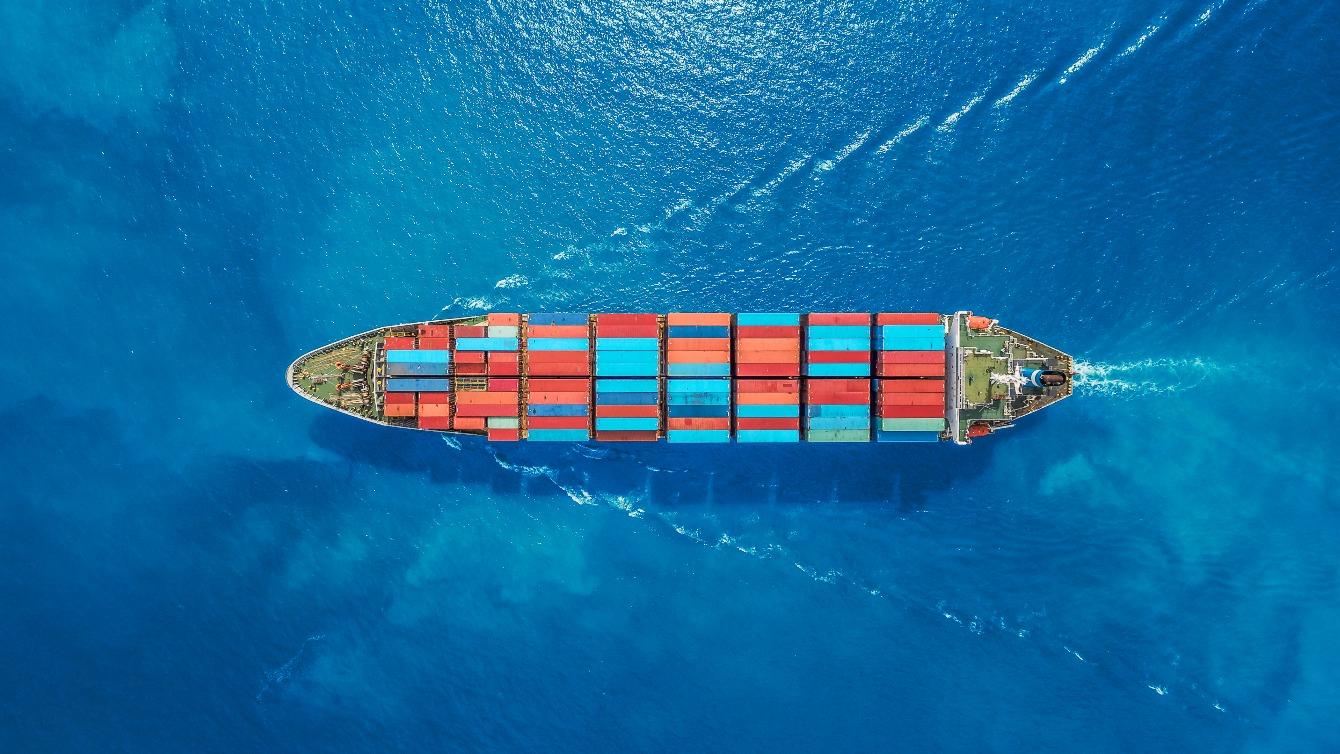
In recent years, a large number of multinational corporations (MNCs), particularly those based in the US and Europe, have implemented organizational restructurings and supply chain transformations in response to the ongoing impact of the Covid pandemic and the geopolitical turbulence worldwide. As part of this adjustment, a number of MNCs are altering their business strategies with regard to China: They are either contemplating exiting the country or looking to restructure their global supply chains, including the role their Chinese subsidiaries play.
Insights from corporate executives at MNCs
In 2023, during an annual breakfast meeting hosted by PwC for C-suite executives from MNCs in Shanghai, an onsite survey was conducted to learn more about the managers’ views on doing business in China. When asked what factors attracted MNCs to build a presence and a supply chain in China, over 80% of the participants identified the country’s large domestic market as the top reason, while citing geopolitical uncertainty as the major challenge.
Supply chain transformation among MNCs
In an interview in May 2022, the chief economist at Morgan Stanley China remarked that China is facing unprecedented pressure when it comes to supply chain transformation. Due to geopolitical factors, MNCs are no longer solely prioritizing commercial aspects when deploying their supply chain strategies and are gradually transitioning from a just-in-time mindset to just-in-case. Especially since the outbreak of Covid and the more recent Russia-Ukraine conflict, MNCs are increasingly pursuing a strategy of supply chain diversification to avoid putting all their eggs in one basket.
“China + 1” as an alternative
Most notably for many small and medium-sized European corporations, the traditional business structure consists of a Chinese production plant and a European headquarters, which distribute to global customers. In such cases, production and most vital upstream suppliers are based in China. However, disturbances to any link in such a supply chain, as happened during the Covid pandemic, cause serious disruptions to the normal production and distribution of products. Nonetheless, completely dismantling China operations does not seem to be a prudent option, as many MNCs have created a highly integrated supply network with crucial links to the People’s Republic, not to mention their sales in the domestic market there. Instead, MNCs can consider implementing a “China + 1” strategy for their supply chain: setting up another production plant outside of China as an alternative.
Plans for relocating supply chains from China
Navigating the competitive landscape of supply chain transformation is a complex task which requires the entire C-suite, including the CEO, to take over the reins from the procurement department. During the survey of C-suite executives from MNCs conducted in March 2023, when asked about supply chain relocation, only a small portion of the respondents said they have already begun setting up an alternative production plant outside of China.
Outmaneuvering the competition
Securing new territory for supply chains means outmaneuvering the growing competition. Rather than just relocating a factory, a global manufacturer can consider creating a whole ecosystem for the region, thereby becoming synonymous with a specific industry. Examples include Penang, Malaysia for medical and electrical devices, and the central provinces of Thailand for the automotive industry. When seeking alternative locations, businesses will have to consider the trade-offs between workforce profiles, infrastructure capabilities and the regulatory environment. For example, Vietnam’s proximity to China is a positive factor for component exports, as is its development in electronics and textiles and the recent partnership it signed with the US (which aims to extend commercial ties in aviation and semiconductors). Such factors must be weighed against the scarcity of skills, especially top technical skills.
All in all, choosing an alternative to producing in China means selecting a site with an entire supply ecosystem, attracting and maintaining suitable talent and obtaining favorable government incentives – or some combination thereof.
MNCs: Focus on high-tech and intellectual property management
In recent years, China has attached great importance to a high-quality development of industries, one that is fundamentally based on innovation and competitiveness. Therefore, the focus on foreign investment has gradually shifted from traditional low-end manufacturing sectors to those that are conducive to innovation. The latter include quantum information and computing, brain science, semiconductors, the seed industry, genetic research, regenerative medicine, biotechnology, clinical medicine and health, deep space/sea and polar exploration, and productive services (including financial services, information services, research and development, and design).
According to data from the Chinese Ministry of Commerce, the amount of foreign investment into China’s manufacturing industry from January to September 2023 was RMB 262.41 billion, representing a year-on-year increase of 2.4%. Among the relevant sectors, the high-tech manufacturing industry grew by 12.8%, while medical equipment and instruments grew by 37.1% and electronic and communication equipment saw a growth rate of 21.5%. In the service industry, investment in R&D and design services increased by 10.2%.
Focus on high-tech manufacturing and knowledge-intensive services
Accordingly, foreign businesses are focusing on high-tech manufacturing and knowledge-intensive service industries. Especially in the fields of intelligent manufacturing, medical care, elder care, and other modern service industries, foreign businesses with unique skills will have access to greater market opportunities.
In the past, most MNCs have been accustomed to managing their intellectual property centrally, usually in their US or European headquarters or research center, which carry out key R&D activities and cover the related costs. But because of China’s new focus on developing its high-tech industries, most notably electric vehicles, more and more core R&D activities are taking place in China. This means that intellectual property rights are sometimes even registered in China and then licensed out. In cases like this, businesses may have to reformulate their R&D strategy and their global IP licensing arrangement.
The central management approach
In the past, MNCs have often adopted a central management approach in which a strategy is developed at headquarters and its implementation is led by regional or country managers dispatched from headquarters or appointed by executives there.
In response to the new models, scenarios and forms of business that are constantly emerging, foreign enterprises are increasingly emphasizing localization strategies, and developing products and services that are more suitable for the Chinese market.
This transformation is aided by the advancing level of education among Chinese managers, who are taking the reigns as regional decision makers. They have a different and more localized understanding of the Chinese market and business environment, and often adopt a business strategy that varies from the one chosen by their foreign counterparts. This can result in a different focus in marketing strategy, for example, or a new response to market trends.
Impact of FX control on funding and cash flow management
Due to stringent foreign exchange controls, managing funds and cash flow has been a challenge for many foreign invested enterprises (FIEs) operating in China.
Many transactions require SAFE’s approval
The main bodies responsible for overseeing the flow of foreign exchange are the State Administration of Foreign Exchange (SAFE) and the People’s Bank of China (PBOC), the central bank. SAFE is the administrative agency responsible for managing foreign exchange activities in China, setting relevant regulations and administering China’s foreign exchange reserves. SAFE’s approval or record-filing is required for a range of transactions involving inbound and outbound forex payments.
In the Chinese foreign exchange system, there are two main accounts: the current account and the capital account. The current account applies to ordinary recurring business transactions, including trading receipts and payments, payment of interest on foreign debt, and repatriation of after-tax profits and dividends, among other currency movements. The capital account, on the other hand, deals with capital import and export, direct investments, and loan and securities, including principal repayment on foreign debts, overseas investments, investment in FIEs, and more.
The payment and receipt of foreign currencies have always been closely monitored, and appropriate planning is therefore required to meet the financing needs of operations in China. However, to facilitate foreign investment and the operational requirements of foreign businesses, SAFE has issued several new rules in recent years that simplify cross-border foreign currency transactions, including for the purpose of equity injection and the funding of merger and acquisition deals. In certain free trade zones, settlement and clearing in foreign currencies may also be possible under the new regulations.
China market outlook and opportunities for MNCs
In 2023, China began opening up more industries to foreign investment and further reducing the negative list restricting foreign investment access. The fields of education, healthcare and elder care were among the first to welcome foreign players, and are likely to be followed by telecommunications, Internet, culture and other fields at a later date. It is expected that, as in the past, the new policy will be piloted in certain free trade zones and then promoted nationwide.
Conclusion
Against the backdrop of global political unrest and, in particular, the gradual deterioration of US-Chinese relations, it is understandable that many corporations are considering leaving China and looking elsewhere for an alternative. Yet its vast market size, comprehensive supply chain ecosystem, high-quality talent reserves and other factors still make China a unique and irreplaceable economy. As demonstrated by PwC’s Supply Chain CEO Survey, the majority of MNCs (71%) are not considering relocating their China operations at this point. According to statistics published by the World Bank, even though China’s total foreign direct investment showed a slight decline from 2020 to 2021, the peak of the Covid pandemic, China’s share of total foreign direct investment in fact slightly increased in the same period. Moreover, when it comes to foreign investment absorption, there is still a huge gap in absolute terms between China and the ASEAN countries individually, not ASEAN as a whole, and India, which are popular alternatives for value chain transformation, indicating that foreign investors still have a great deal of confidence in the People’s Republic.
Despite future uncertainties, China still has considerable potential. After years of rapid expansion, it is shifting its focus from traditional production to high-technology industries and high-quality development. Moreover, its government is laying the groundwork for a further opening of the country’s capital market through a series of supportive policies. In such challenging times, businesses should take these issues into account when rethinking the role China will play in their global operations.

Tony Duan
Tony Duan is a Partner at PwC in the Transfer Pricing team in Beijing, where he has worked since 2008. He has also taken a two-year secondment to work in the PwC Transfer Pricing team in Switzerland. He has gained extensive experience in a variety of transfer pricing projects, such as transfer pricing planning and restructuring, global and local transfer pricing documentation, and country-by-country reporting, as well as in managing international tax controversies through the proactive use of tax rulings, Advance Pricing Arrangements (APAs) and Mutual Agreement Procedures (MAPs). He has served a number of clients in various industries, including automotive, pharmaceutical, technology and industrial products.
Tel: +86 10 6533 3687
Email
Interested in knowing more?
Make sure you get the latest information and subscribe. As a subscriber to the digital edition, you will receive an information update three times a year.
PwC China Compass
You will discover how to take advantage of current opportunities and safely circumnavigate the risks of doing business in China.
Contact us

Partner, PwC China Business Group Leader & Chairman PwC European China Business Group, PwC China
Tel: +86 10 6533-8882










